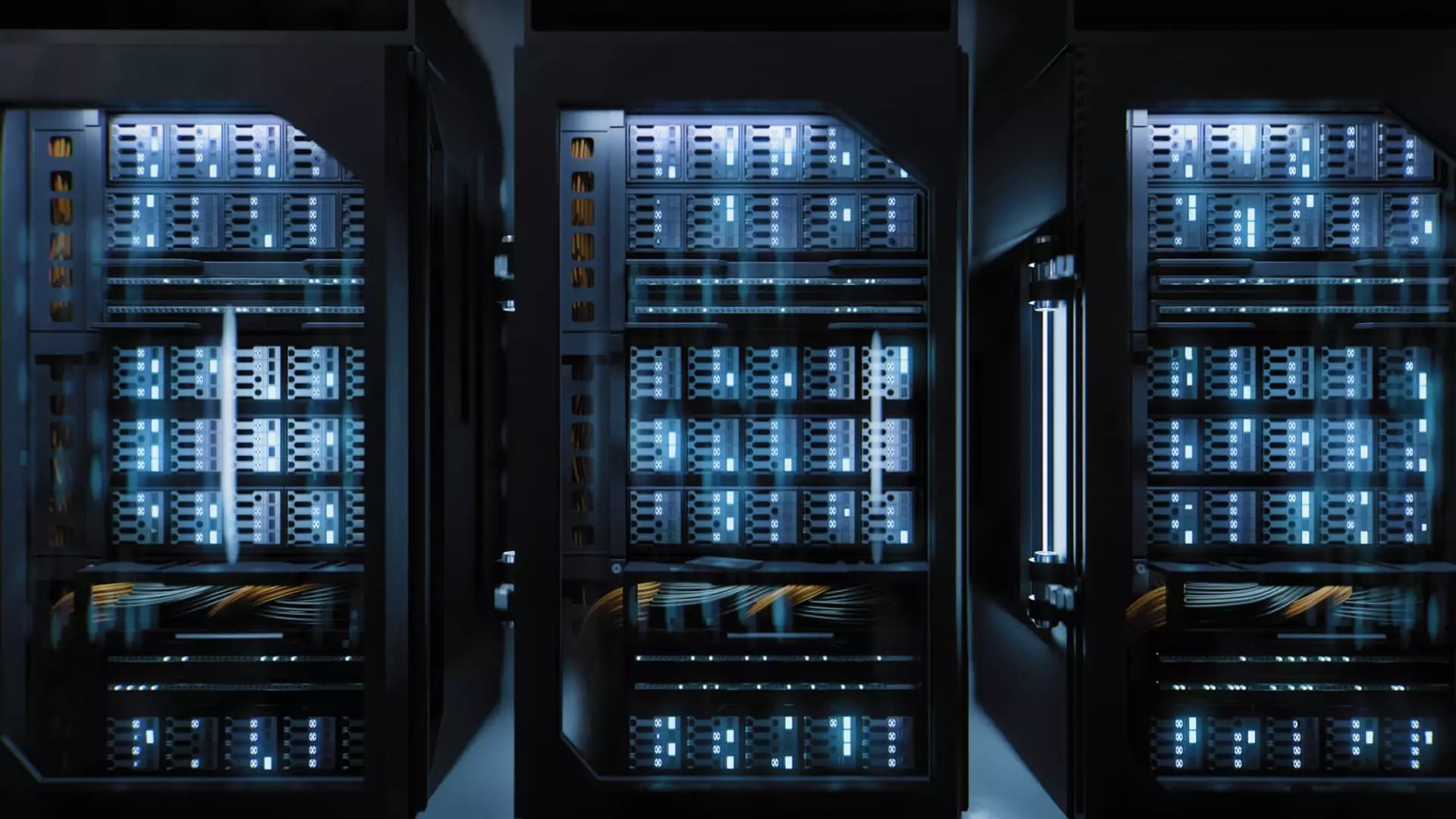As the world pivots toward artificial intelligence (AI), the implications for energy-intensive data centers are significant, particularly in Europe. With the increasing reliance on powerful graphics processing units (GPUs) for advanced AI applications, the industry is facing a dual challenge: the need for higher energy efficiency and the imperative of sustainability.
Recent research from Goldman Sachs projects that the demand for data centers will soar by 160% by 2030, largely fueled by AI innovations. This unprecedented growth poses risks to Europe’s ambitious decarbonization targets. AI, especially through the deployment of high-powered chips like Nvidia’s, demands intense energy and generates considerable heat, necessitating advanced cooling techniques. To put it in perspective, the energy consumption of AI processes may rival that of numerous homes, underscoring the toll that this technological evolution could wreak on existing energy infrastructures.
Michael Winterson, chair of the European Data Center Association (EUDCA), highlights the potential challenges as American chip manufacturers prioritize market dominance over environmental considerations. As European data centers strive to accommodate these chips’ higher temperatures, the push for sustainable practices may, paradoxically, lead to a regression to pre-1990s cooling methodologies. Winterson’s assertion that the American-led AI race may overshadow critical sustainability issues emphasizes the competing priorities in this technological race.
Efficient cooling methods are crucial for managing the heat produced by high-performance chips. Current trends suggest a shift away from traditional air cooling methods to more advanced liquid cooling solutions. Companies like NDC-GARBE have raised alarms about the impending shift in cooling standards that could undermine energy efficiency. As U.S. chipmakers call for lower water temperatures, European engineers face the daunting task of adopting new technologies without sacrificing efficiency.
Energy management firms are acutely aware of these challenges. Schneider Electric has engaged in discussions with the European Commission to examine energy sourcing options for AI data centers. They stress that while energy consumption will inevitably rise, the ability to maintain a low Power Usage Effectiveness (PUE)—a measure that assesses the energy efficiency of a data center—should not suffer. Maintaining this balance is essential if Europe is to meet its energy consumption reduction goals while simultaneously supporting the burgeoning AI industry.
Recent dialogues concerning energy consumption in AI data centers have spanned various stakeholders, showcasing the necessity for a unified strategy that encompasses regulatory bodies, energy suppliers, and technology developers. These discussions are particularly vital as they could pave the way for reforms that address both intensive energy use and sustainability.
Equinix’s Ferhan Gunen emphasizes that discussions surrounding AI data center operations are complex and require careful navigation. As organizations seek higher server densities, the balance of power, energy consumption, and thermal management becomes a critical focus area. This evolution is not merely a technical shift but rather an ongoing conversation within the industry about the best way forward.
As market demands evolve, companies like Nebius play a pivotal role in the transition to more efficient infrastructure. With plans for significant investment in AI capabilities, Nebius aims to lead the charge in integrating Nvidia’s advanced technologies while navigating the energy landscape. Their focus on liquid cooling exemplifies how some companies are proactively addressing energy efficiency concerns despite initial setbacks.
The ongoing expansion of data centers in Europe, driven in part by U.S. operators, underscores a more extensive race to align with the EU’s goals of environmental sustainability. Sicco Boomsma of ING speaks to this convergence, where competitiveness is tied to achieving super-efficient infrastructure that meets the environmental standards set forth by the EU.
As data centers in Europe adapt to the escalating demands of AI technology, the intricate relationship between energy use and sustainable practices will define the next phase of this evolution. Striking a balance between innovation and environmental responsibility will require collaboration among stakeholders and the prudent implementation of new technologies. Ultimately, the success of this transition will depend on the industry’s ability to not only embrace artificial intelligence but also prioritize a greener future. The stakes are high, but with strategic planning and a shared commitment to sustainability, the data center sector might emerge as a model of coexistence between technological advancement and ecological stewardship.


Leave a Reply